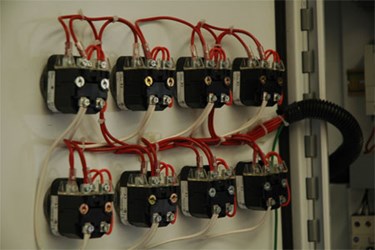Automation 101: The 7 Habits Of Highly Automatable Systems

By Paul Brake, P.Eng., Dynamic Machine Design

When we automate, we are really just mechanizing individual tasks, controlling that task with some form of computerization, and linking those tasks together in what is called system integration. So when looking at automation the first step is to identify exactly which tasks you should be mechanizing. Here is a brief list of the seven most common task attributes that immediately lend themselves to automation. Looking around your plant and your processes you will be able to use this list to quickly identify what areas you should be first considering for automation.
- You have a task that involves repeatability of motions. Repeatable motions are very boring for people and lead to repetitive strain injuries. This boredom leads to slower production, increased errors, and job dissatisfaction with workers. Repetition leads to complacency among workers. With this comes an marked decrease in quality and substantial increases in rejects and waste. Machines will perform repeatable tasks flawlessly and far quicker than any human leaving the workers to do more involved and interesting tasks. Machines do not get tired or bored and do not need breaks. An automated system can be relied to repeat a task flawlessly, at a prescribed speed without deviation.
- Task involves very high accuracy and skill levels. Even and very skilled technician cannot match the accuracy of a machine. We have put machines into service with 0.001” repeatable accuracy. Our closed loop control systems not only allow us to design to an arbitrary accuracy, it will also perform the tasks at a much faster rate than any human can. Reducing the required skill level in a factory and reducing production time are two main requirements for reducing costs and maintaining a competitive edge. The increased accuracy also speaks to higher quality and reduced waste. As well, the higher accuracy will provide you with a superior product in the market place greatly improving your positioning.
- Task involves danger. A machine can be programmed to operate within a very specific range of motion. If the task is within a dangerous environment, whether heat, or chemical or dangerous moving parts, a machine is a far simpler and safer method of completing a task than trying to outfit and train a person to perform the same task safely. The automated system can be programmed to stay within a safe physical envelop and be constructed of materials that will withstand the required environment.
- Task involves high manpower and time. Every process has a bottleneck, and that bottleneck is usually a manpower or resources issue. Mechanizing and automating tasks or procedures within a process can effectively de-bottleneck an entire process and often substantially increases productivity while reducing costs. Automation is particularly useful where short run, high throughput is required.
- Task involves excessive handling. Material handling is often a slow, resource consuming issue and the more a product is handled the greater the danger of damage to the product and injury to the workers. Material handling has been a standard area of automation for many years but with the advancements and reduced costs of modern computerization, material handling has become a first step in plant automation in most factories. Material handling also comes into play in buffering processes to compensate for variations in production from complimentary processes. When job A feeds into job B and job A varies so you have to keep a small stockpile of goods in order to keep job B running, an automated system is a perfect solution. It will receive parts as they come and feed job B as it is needed and never need human intervention.
- Requirement for accurate inspections. Mechanizing and automating your inspection station will assure that you will turn out a far more standardized product with zero rejects going out to your customers. We can design and build equipment that will inspect for color, clarity, shape, weight, size, texture or dimensions. Modern machine vision has the capability of sampling up to 500 frames per second and can differentiate up to 16 million different colors, which is more than the human eye can discern. Other testing can also be incorporated like for example using ultrasonics to test for cracks in a casting. If you have a specific inspection category, we can automate it.
- Offshore competition. Sadly, offshore competition can produce products far cheaper than we can in North America using traditional manufacturing methods. That is, however beginning to change with the high cost of transportation and the high material cost from the waste generated through this method. We can command a competitive edge by mechanizing and automating our processes. Machines allow us to substantially increase our production rates, decrease costs through reduced waste and manpower, and produce a more standardized, higher quality product with far fewer rejects.
It seems simple because it is.
